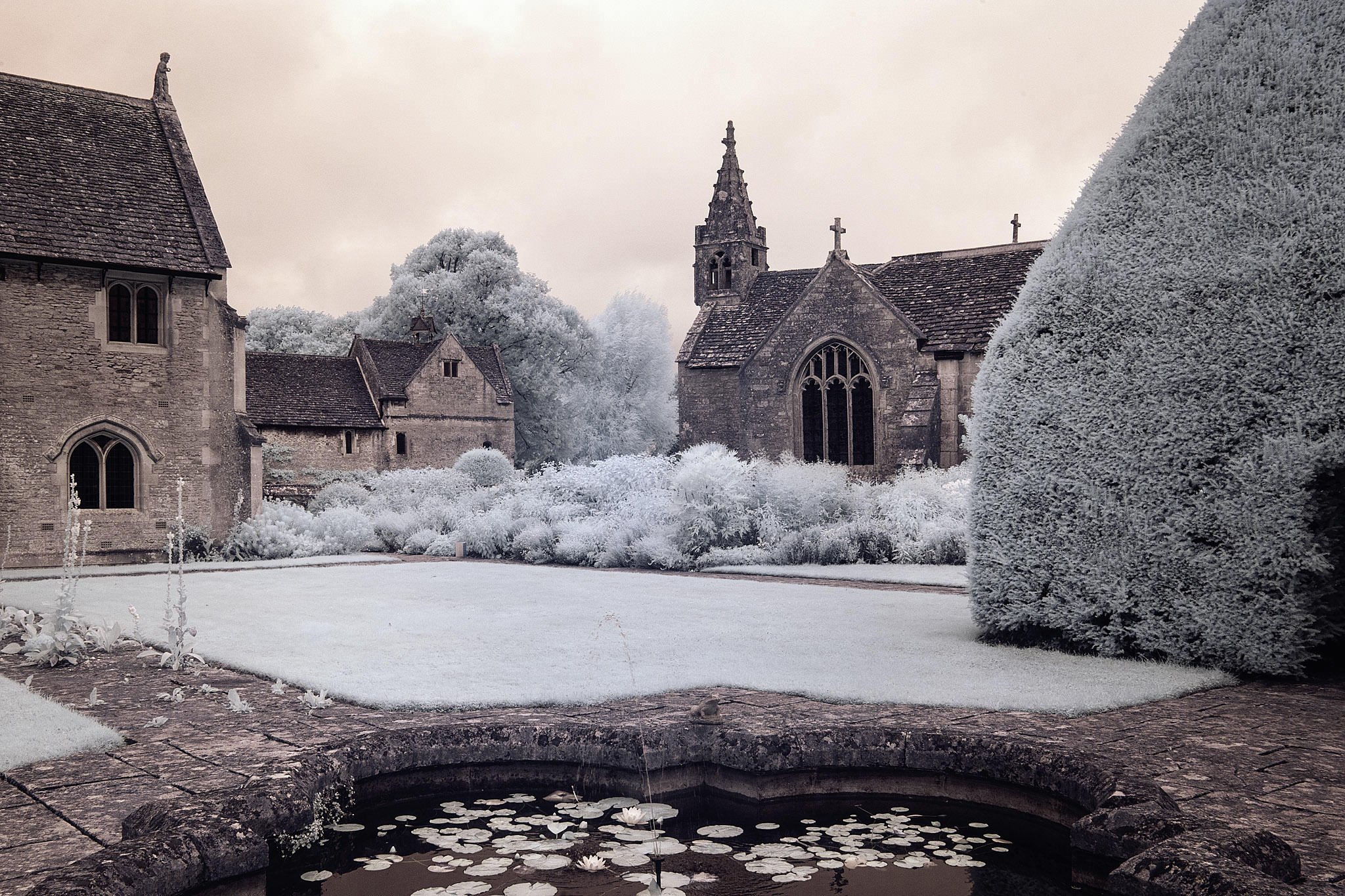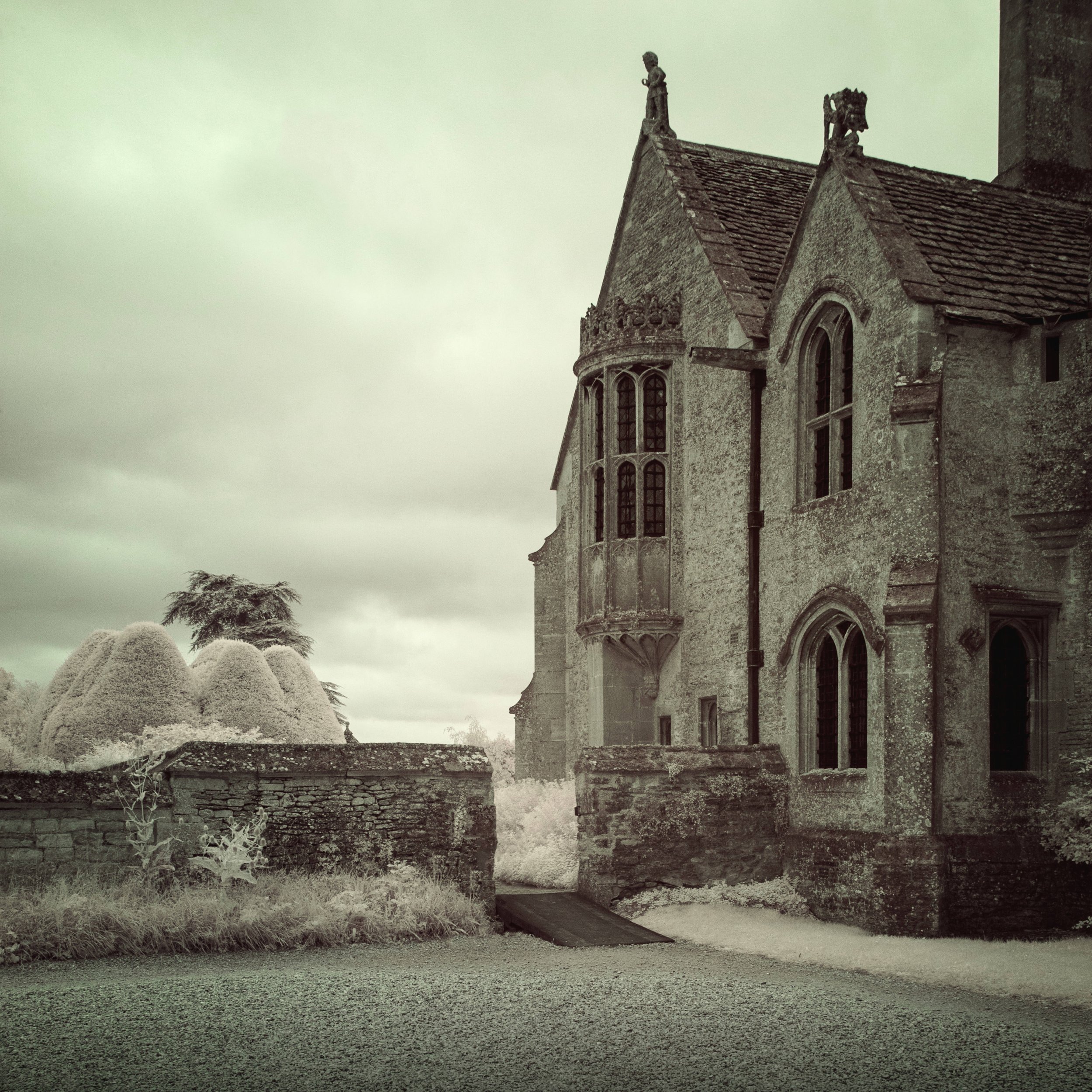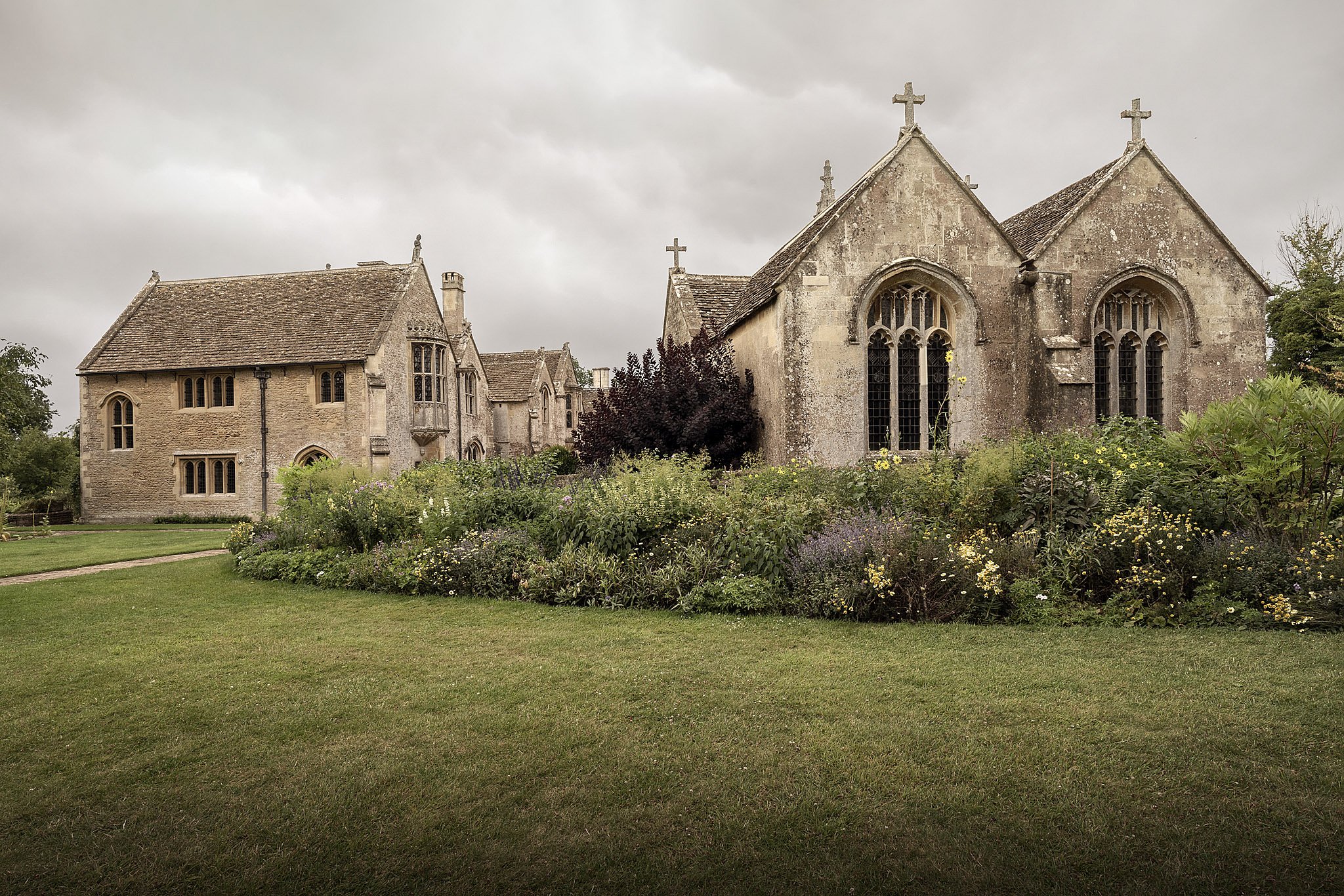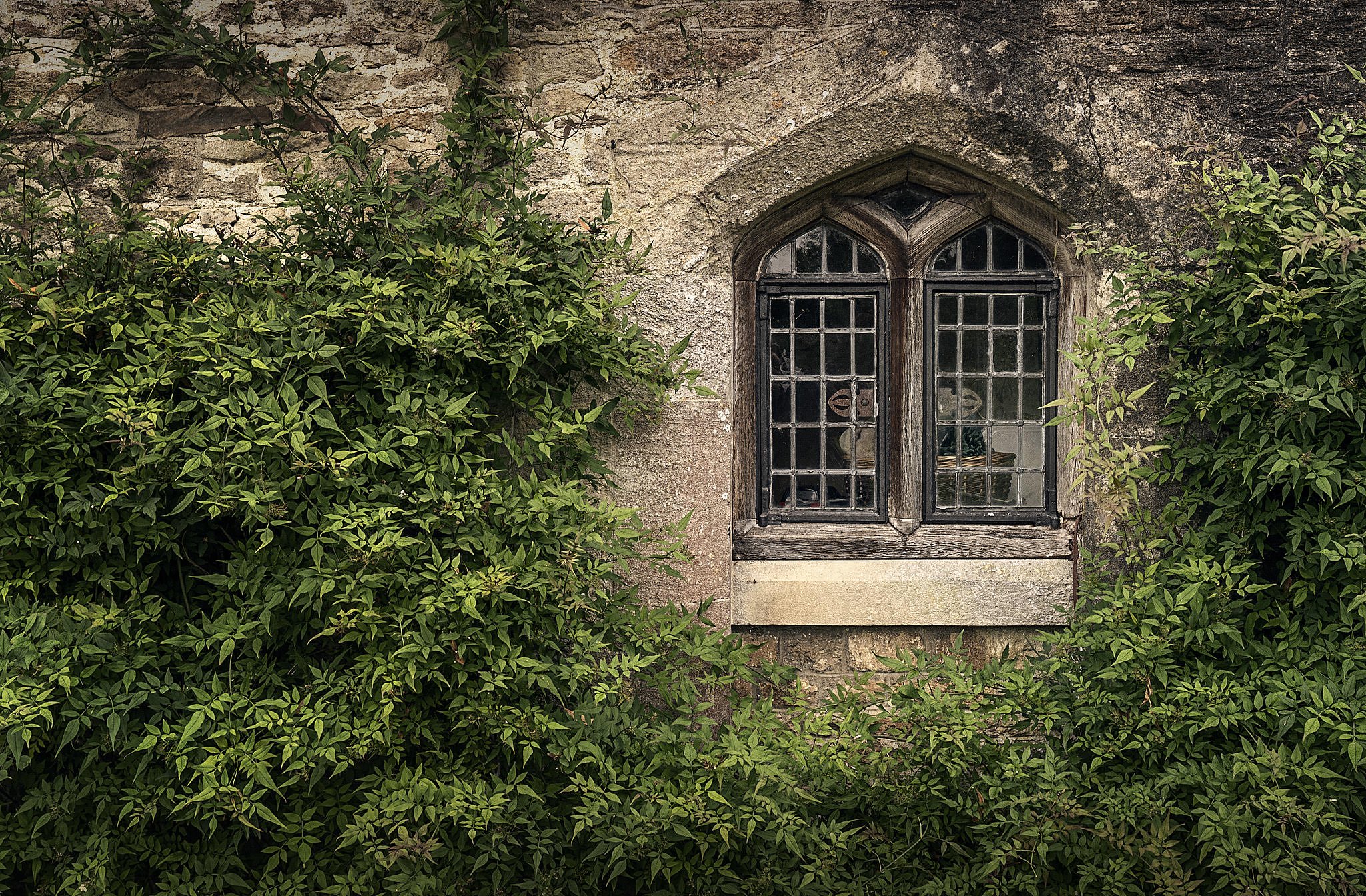Great Chalfield Manor & Church, South West, England









Great Chalfield Manor and Church has to be one of the most picturesque late medieval manor houses in England. It was built by Thomas Tropenell in the 1470’s and completed around 1480. The aesthetic is enhanced by the scenic moat that surrounds the estate. The interior can rarely be seen, and when it is open it is by guided tours only, however the exterior is really the impressive feature here. Having undergone extensive restoration, the exterior still feels as though time has stood still.
The estate where the manor of Great Chalfield now stands, was recorded in the Domesday Book as: ‘Ernulf himself holds Caldefelle, Wallef held it in the time of King Edward and paid geld for 2 and a half hides (around 250 acres). There is land for 2 ploughs. Of this 1 and a half hides are in demesne, and there is one plough with one slave and 4 bordars. There is half a mill rendering 18 pence and 6 acres of meadow and 6 acres of woodland and 8 acres of pasture.’
The manor house is somewhat typical of the late medieval period. The front of the house has a wealth of decorative features, while the rear has a courtyard where the servants’ areas were located, and this area lacks the decorative details of the front.
There are records mentioning a chapel here in 1316, and a church in 1349. The presence of a earlier Norman font raises the question of there once being an even earlier church here, of which nothing now remains. The present chancel was entirely rebuilt after Tropenell’s purchase of the land in the 15th Century, and is a fine example of a private family church.
The Tropenell chapel was also added in the 15th Century, and is bordered by the carved 15th Century stone screen. The screen displays five Coats of Arms, which record the Tropnell marriages. These include the 14th Century marriage with the Percy family, through which Thomas Tropenell laid claim to the manor of Great Chalfield.
Above the panelling in the nave of the church, can be seen two 15th Century consecration crosses painted on either side of the doorway.
Thomas Tropenell did not come by the manor at Great Chalfield easily, and had he not been a lawyer himself, it is unlikely that he would have been successful in his claim. The complicated inheritance and titles of many of the lands in England by the late Middle Ages, meant that much time was spent in the courts trying to prove ownership, at a time when no government records of land titles were kept.
The manor of Great Chalfield was part of the de Percy family estates. Thomas Tropenell had a claim though the marriage of Katharine de Percy and Walther Tropenell that dated back to 1260, but it was through that marriage that he was a descendant. There were however, two others that also claimed the same descent. Although the main seat of the De Percys, now the Earls of Northumberland, was at Alnwick Castle, it was a junior branch of the family that had built the manor of Great Chalfield.
By the 15th Century, the old manor of Great Chalfield had become neglected, having been previously occupied by William Rous, who is said to have sold its woods, tiles, lime and houses to furnish his lifestyle. Thomas Tropenell took possession of Great Chalfield after a long legal dispute in 1443, but there was still opposition to his claim.
The previous owners second wife was also descended from the de Percy’s, and moved into the manor before the court had made a decision, she then had to be ejected from the manor, settling for a figure of £53, a substantial amount at the time. A few years later, Tropenell had to fight yet another claim from Thomas Beverley, but eventually succeeded here as well, but he would have spent a considerable about of time and money to obtain Great Chalfield.
Thomas Tropenell was married twice, firstly to Edith Bourton, who was a widow. From her first husband he inherited property in Gloucestershire and in Atwork. There is no record that they had any children, and after Edith’s death Thomas married his second wife, Margaret Erley. They were married in 1456, when Thomas was around 50 years of age. Together Thomas and Margaret had four surviving children. Their eldest son, Christopher, inherited the lands until his death in 1503, and his two daughters Anne and Mary became the coheirs of Great Chalfield.
Having lived and worked throughout the Wars of the Roses, Thomas Tropenell managed to successfully navigate the conflict. He was pardoned by Richard III in 1484, and then pardoned again by Henry VII.
Thomas Tropenell is also the author of the Tropenell Cartulary, a large volume produced on vellum, which sets out his title to his manors and other estates. He may have been prompted to create it after having had to pursue legal claims to some of his lands. The Tropenell Cartulary, together with the house and garden, was presented to the National Trust by Robert Fuller on the 1st of January 1943, with the provision that his descendants would also be able to live at the manor. Today they still reside in part of the house.
One of the reasons why the land where the manor sits was chosen originally, probably had to do with the fresh spring which now feeds the fishpond. Fresh drinking water was a rare and scare resource, and would have greatly enhanced the lands value. In the Victorian era, the springs around the manor still fed both the nearby villages of Holt and Broughton Gifford.
Thomas Tropenell was a lawyer and thrifty businessman, who made his fortune in part through association with the Hungerford family of Corsham. That he was able to build his own house at all, shows just how much things were changing in late medieval England.
By the late 19th Century, the manor was in a completely ruinous state. It was purchased in 1878 by Robert Fuller, who was a local businessman, who set about restoring and recreating the medieval manor. Architect Harold Brakspear was hired to completely rebuild the solar wing. It is thought that a drawing of the original building was used to aid the process of restoration, and the work done was exceptional for the time. The Fuller family still live at Great Chalfield today, although it was given to the National Trust in 1943.







